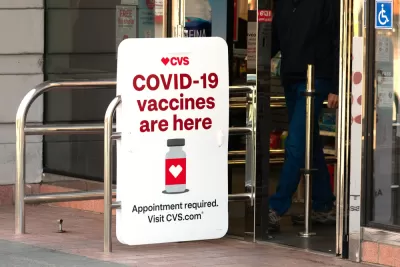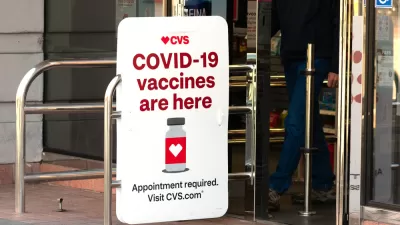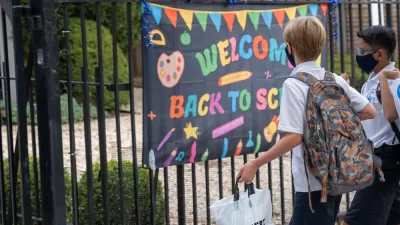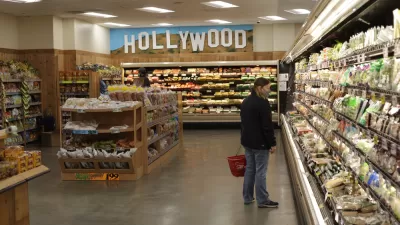Millions of fully vaccinated Americans who have been anxiously awaiting new guidance from the Centers for Disease Control and Prevention on what they can now do safely were given initial recommendations that apply only to private settings.

"As of today [March 8], 59 million people in the United States have received at least one dose of COVID-19 vaccine, and approximately 31 million or 9.2 percent of the U.S. population is fully vaccinated, putting us on a strong path to eventually end this pandemic," stated Dr. Rochelle Walensky, the director of the Centers for Disease Control and Prevention (CDC), at the beginning of her presentation during Monday morning's White House COVID-19 Response Team press briefing (view the 37-minute video on YouTube).
And with more and more people getting vaccinated each day, we are starting to turn a corner.
This is why, today, CDC is releasing its initial guidance for the public that, for the first time, lays out some of the activities considered safe for those who are fully vaccinated. When I say "fully vaccinated," I mean people who are two weeks after their second dose of either the Pfizer or Moderna vaccines, or two weeks after a single dose of the Johnson & Johnson vaccine.
Risk not eliminated with vaccination
For now, 'back to normal' for those fully vaccinated is restricted to private, as opposed to public settings. It is still possible for vaccinated people to become infected and transmit the virus to others. More on that possibility from a Bloomberg opinion editor who shares her personal story below with an expert.
"The new guidance—which is based on the latest science — includes recommendations for how and when a fully vaccinated individual can visit with other people who are fully vaccinated and with other people who are not vaccinated," states the CDC press release (source article) on the first set of guidelines on how fully vaccinated people can visit safely with others. [Also see CDC webpage, "When You’ve Been Fully Vaccinated: How to Protect Yourself and Others].
This guidance represents a first step toward returning to everyday activities in our communities.
"Everyone – even those who are vaccinated – should continue with all mitigation strategies when in public settings," said CDC Director Rochelle P. Walensky, MD, MPH. “There are some activities that fully vaccinated people can begin to resume now in their own homes. Everyone – even those who are vaccinated – should continue with all mitigation strategies when in public settings.”
The first two bullet points apply only within the confines of one's own home.
- Masks and social distancing are not necessary when meeting with other vaccinated people
- No precautions needed when meeting with unvaccinated people providing that:
- The other people represent a single household.
- None of the unvaccinated people from that single household are at risk of severe COVID-19.
Vaccinated, then infected
The third bullet in CDC's Interim Public Health Recommendations for Fully Vaccinated People should provide an incentive for every adult to be vaccinated:
- Refrain from quarantine and testing if [the fully vaccinated person] does not have symptoms of COVID-19 after contact with someone who has COVID-19.
If a fully vaccinated person experiences COVID-19 symptoms, regardless of with whom the person has been in contact, they should consider being tested to ensure they haven't been infected, which brings us to just such a case. But first, here's how Dr. Walensky characterized the infection risk during the briefing.
"However, there is still a small risk that vaccinated people could become infected with milder or asymptomatic disease, and potentially even transmit the virus to others who are not vaccinated. Understanding the size of this risk in vaccinated people and the risk of transmitting the virus to others who are not vaccinated is an ongoing area of research."
With that clarification, consider the experience of Mary Duenwald, a Bloomberg Opinion editor who became mildly ill with COVID-19 "a few weeks" after receiving her second dose of the Pfizer Inc.-BioNTech SE vaccine. She co-wrote the column, published March 5, with Sam Fazeli, a senior pharmaceuticals analyst for Bloomberg Intelligence.
Fazeli explains why people who are fully vaccinated can become infected.
The reality is that so-called sterilizing immunity, or protection that completely blocks a virus from infecting you, is rare. In fact, only one vaccine has been proven to provide that, and that is the smallpox shot...
It’s also possible that you are infected with a new variant, such as the one that is circulating in New York, known as B.1.526. These variants are potentially better at getting past your antibody immunity.
"My symptoms are mild, as if this were just a cold. Can I assume the shot is still protecting me?" asks Duenwald.
Fazeli: Of course. You will never know how bad your symptoms would have been if you had not been vaccinated, but they could have been much worse. The vaccines have high efficacy against severe and critical disease — indeed their main purpose is to keep people out of the hospital and lower their risk of dying.
Even the ones with apparently lower efficacy against mild and moderate disease, such as Johnson & Johnson’s shot, show better efficacy against severe and critical illness.
Fazeli addresses related issues raised by Duenwald, including transmissibility of the virus from vaccinated people, and COVID testing results in relation to virus incubation periods, which may be different from those who are unvaccinated. One of his answers, though, is contradicted by the second bullet in the aforementioned new CDC guidance, released three days after the Bloomberg opinion, which shows the importance of CDC's recommendations for the 31,493,040 Americans who were fully vaccinated as of March 8.
Media coverage of CDC's interim "fully vaccinated" guidelines
- Vaccinated Americans may gather indoors in small groups but should still wear masks in public, the C.D.C. said, The New York Times
- Fully vaccinated people can visit with nearby grandchildren, dine indoors with one another, CDC says, The Washington Post
- What you can and can’t do after getting fully vaccinated against COVID-19, Los Angeles Times
- Here's what the CDC says fully vaccinated people can do, CBS News
Related in Planetizen:
- A Fourth Coronavirus Surge is Likely, March 1, 2021
- Are We 'Rounding the Corner' in the Pandemic? February 16, 2021
FULL STORY: CDC Issues First Set of Guidelines on How Fully Vaccinated People Can Visit Safely with Others

Maui's Vacation Rental Debate Turns Ugly
Verbal attacks, misinformation campaigns and fistfights plague a high-stakes debate to convert thousands of vacation rentals into long-term housing.

Planetizen Federal Action Tracker
A weekly monitor of how Trump’s orders and actions are impacting planners and planning in America.

San Francisco Suspends Traffic Calming Amidst Record Deaths
Citing “a challenging fiscal landscape,” the city will cease the program on the heels of 42 traffic deaths, including 24 pedestrians.

Bend, Oregon Zoning Reforms Prioritize Small-Scale Housing
The city altered its zoning code to allow multi-family housing and eliminated parking mandates citywide.

Amtrak Cutting Jobs, Funding to High-Speed Rail
The agency plans to cut 10 percent of its workforce and has confirmed it will not fund new high-speed rail projects.

LA Denies Basic Services to Unhoused Residents
The city has repeatedly failed to respond to requests for trash pickup at encampment sites, and eliminated a program that provided mobile showers and toilets.
Urban Design for Planners 1: Software Tools
This six-course series explores essential urban design concepts using open source software and equips planners with the tools they need to participate fully in the urban design process.
Planning for Universal Design
Learn the tools for implementing Universal Design in planning regulations.
planning NEXT
Appalachian Highlands Housing Partners
Mpact (founded as Rail~Volution)
City of Camden Redevelopment Agency
City of Astoria
City of Portland
City of Laramie





























